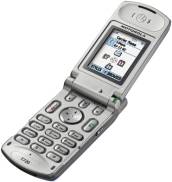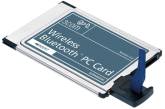
(See related pages)
WIRELESS DEVICES Most digital devices can be wired or wireless. But some devices lose a lot of their usefulness if you have to use a wire. Cell phones, PDAs, tablet PCs are all examples. Therefore, there is an increasing need for wireless networking of devices. For devices to be able to talk to each other they all have to speak the same language, i.e. they must be built to a standard that dictates how information will be transferred. You may have heard of Bluetooth and WiFi. These are the two principal wireless standards, that is, they describe ways of connecting devices without wires so that they can send information can move back and forth. The ultimate would be to be able to link all the digital devices you have together. That means that computers, printers, PDAs, TVs, CD and DVD players would be able to talk to each other. Then you could send music from your living room stereo system to your music system in the car outside your house. You could turn on home appliances, like the thermostat or the lights, via the Internet. You would no longer have to have your DVD player near you to watch a movie, you could send the movie to any television or computer screen in your building.
Bluetooth Bluetooth is intended to be used with individual devices like notebooks, PDAs, printers, cell phones, etc. This standard is ideal for establishing quick networks in meetings or among members of a workgroup who need to share applications or exchange files. WiFi The other wireless standard is WiFi (wireless fidelity)which is used to build networks or parts of networks so that a wireless device like a notebook or PDA can access the network. Like Bluetooth, it's a way of building devices so that even if the devices are from different manufacturers, they can work together. It's sort of similar to the outlets in your home -- you can plug any appliance into any outlet. Similarly, WiFi-enabled devices can connect to each other. There are three types of WiFi. The most common one is called IEEE 802.11b, although it's no longer considered fast enough for today's needs. A new type of WiFi, IEEE 802.11a, was introduced to address the speed issue, but while it's faster, it's not compatible with IEEE 802.11b so that to use it you have to change all your devices. The newest type of WiFi is IEEE 802.11g which works with the "b" type 802.11b but not with the "a."
Many of the major manufacturers of digital equipment already have WiFi products on the market. The list includes Cisco, NetGear, Phillips, and LinkSys. Microsoft is also lending its support and has designed Windows XP to accommodate wireless networking easily. Bill Gates has even said that WiFi technology is one of the most important advances in the last five years and will be "explosive in its impact." WiFi uses the same radio frequency as some cordless phones, but can carry information 50 times faster than a cable modem. You'd start with a base station and then your devices - DVD player, tablet PC, robot, dishwasher, computer - would be fitted with antennas and software so that they could communicate with the base station. The typical range would be up to about 300 feet. One of the biggest obstacles to the spread of WiFi is its lax security. It's pretty easy to access someone's wireless network. In fact, some people engage in "war driving," meaning that they drive around neighborhoods with WiFi devices and try to connect to the wireless networks in the buildings they pass. They can get access to the Internet that way. However, despite these and other difficulties, we're likely to be seeing more and more wireless-ready devices. As they become cheaper and easier to install, more people will buy them, providing incentive to manufacturers to build more, so that more people buy, and so on and so on To find out more about wireless devices
|


